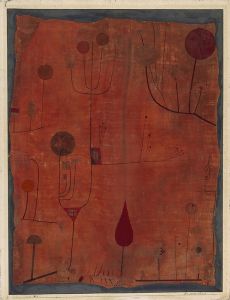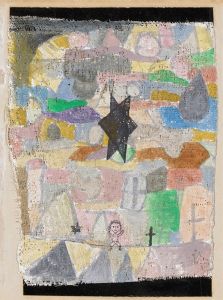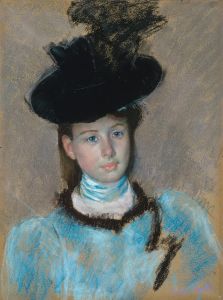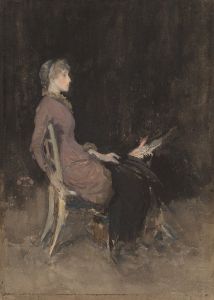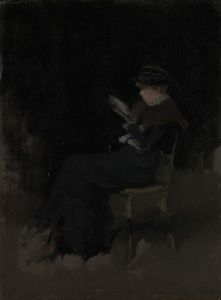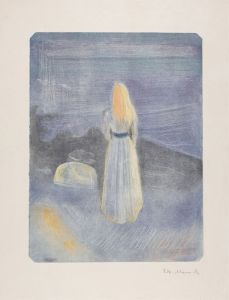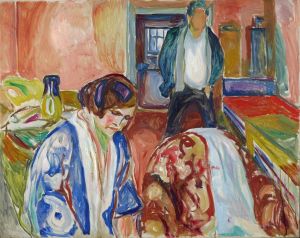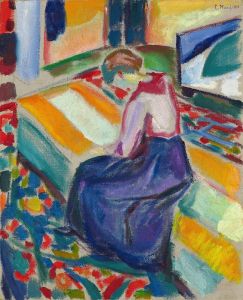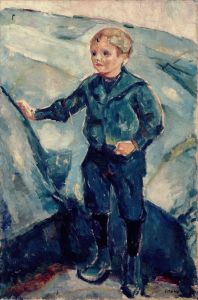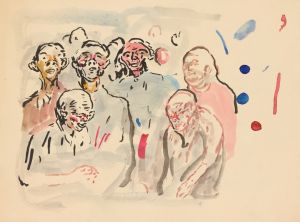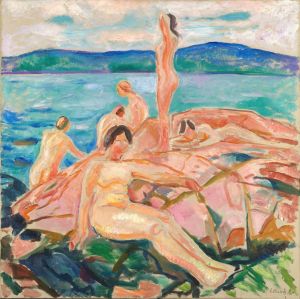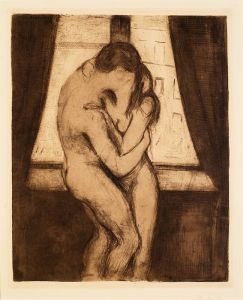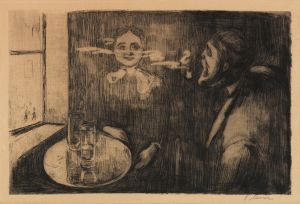
Vampire I
A hand-painted replica of Edvard Munch’s masterpiece Vampire I, meticulously crafted by professional artists to capture the true essence of the original. Each piece is created with museum-quality canvas and rare mineral pigments, carefully painted by experienced artists with delicate brushstrokes and rich, layered colors to perfectly recreate the texture of the original artwork. Unlike machine-printed reproductions, this hand-painted version brings the painting to life, infused with the artist’s emotions and skill in every stroke. Whether for personal collection or home decoration, it instantly elevates the artistic atmosphere of any space.
"Vampire I" is a woodcut print created by the Norwegian artist Edvard Munch in 1895. Munch, who is best known for his iconic painting "The Scream," was a pivotal figure in the Symbolist and Expressionist movements. His works often explore themes of existential angst, love, and death, reflecting his own troubled life and the broader anxieties of the modern age.
The image in "Vampire I" depicts a woman with flowing hair bending over a man, her lips seemingly touching his neck. The scene is imbued with a sense of intimacy and menace, capturing the dual themes of love and death that pervade much of Munch's work. The title "Vampire" suggests a predatory relationship, but the ambiguity of the figures' interaction leaves room for multiple interpretations. Some viewers see the woman as a comforting presence, while others perceive her as a threatening figure.
Munch's technique in "Vampire I" is notable for its use of the woodcut medium. Woodcut printing involves carving an image into the surface of a wooden block, which is then inked and pressed onto paper. This method allows for bold contrasts and a distinctive texture, both of which are evident in "Vampire I." The stark lines and dramatic use of black and white in the print enhance the emotional intensity of the scene.
"Vampire I" is part of Munch's larger series known as "The Frieze of Life," which includes other famous works such as "The Scream," "Madonna," and "The Dance of Life." This series explores the human condition through themes of love, anxiety, and death, reflecting Munch's belief that art should express the inner life of the artist and the universal experiences of humanity.
The woodcut was produced in several versions, with variations in color and detail. Munch often revisited his themes and motifs, creating multiple versions of his most significant works. This practice allowed him to explore different emotional and aesthetic effects, and "Vampire I" is no exception. The various iterations of the print demonstrate Munch's evolving approach to composition and his interest in the interplay between form and meaning.
"Vampire I" has been exhibited in numerous museums and galleries around the world, contributing to Munch's reputation as one of the most important artists of the late 19th and early 20th centuries. The print is held in several prominent collections, including the Munch Museum in Oslo, Norway, which houses the largest collection of Munch's works.
Edvard Munch's "Vampire I" remains a powerful and enigmatic piece, reflecting the artist's deep engagement with the complexities of human emotion and experience. Its enduring appeal lies in its ability to evoke a range of interpretations and emotional responses, making it a significant work in the history of modern art.





